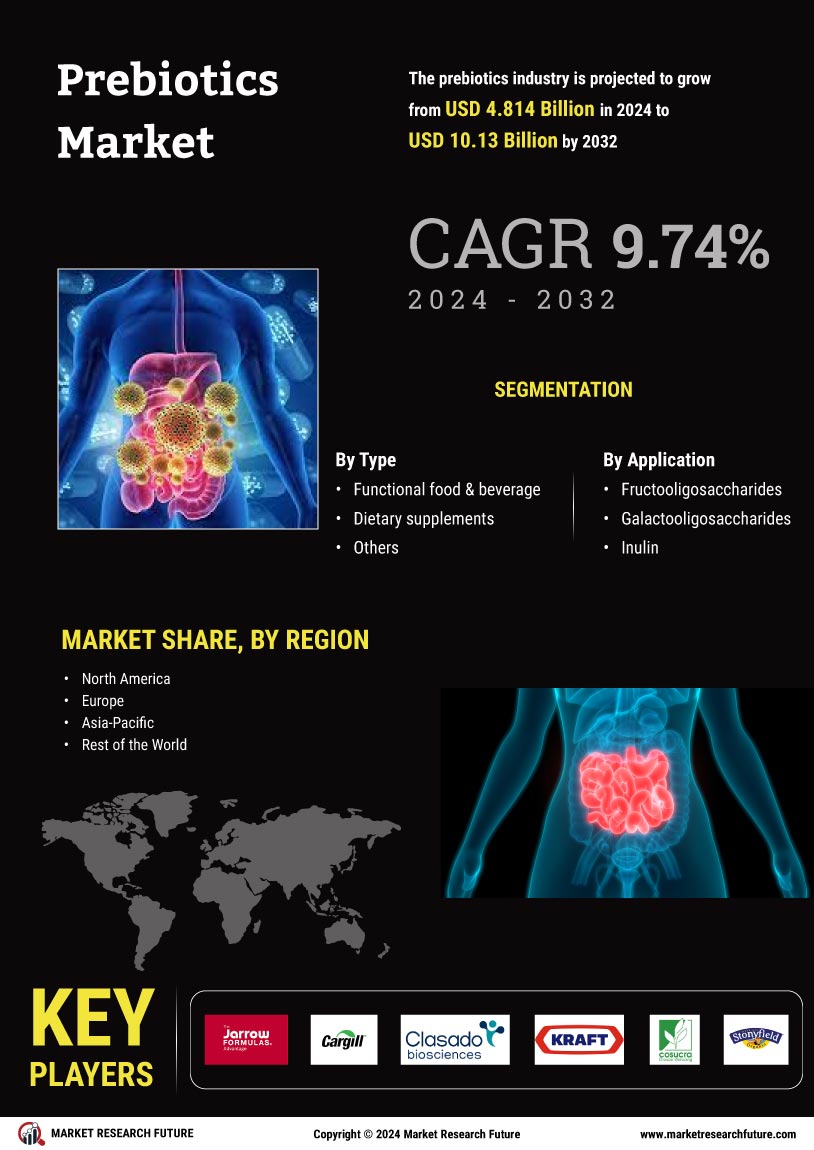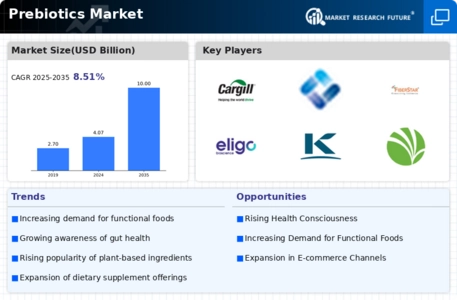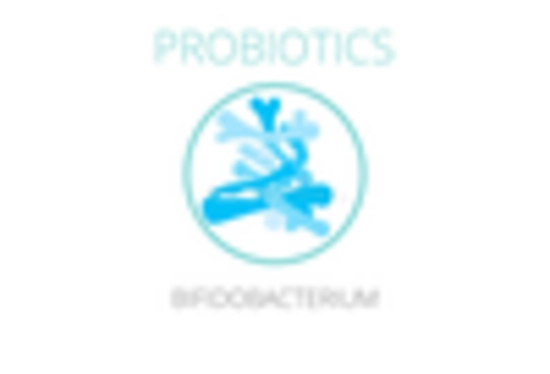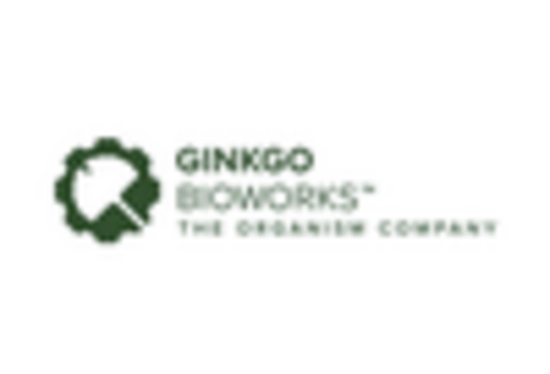The Prebiotics Market is currently characterized by a dynamic competitive landscape, driven by increasing consumer awareness regarding gut health and the rising demand for functional foods. Key players such as DuPont (US), Kerry Group (IE), and Nestle (CH) are strategically positioning themselves through innovation and partnerships to capture market share. DuPont (US) focuses on developing advanced prebiotic solutions that cater to specific health needs, while Kerry Group (IE) emphasizes its commitment to sustainability and clean label products. Nestle (CH), leveraging its extensive distribution network, aims to expand its portfolio of prebiotic offerings, thereby enhancing its competitive edge. Collectively, these strategies contribute to a moderately fragmented market structure, where innovation and consumer-centric approaches are paramount.
In terms of business tactics, companies are increasingly localizing manufacturing and optimizing supply chains to enhance efficiency and responsiveness to market demands. The competitive structure of the Prebiotics Market appears to be moderately fragmented, with several players vying for dominance. The influence of key players is significant, as their strategic initiatives often set industry benchmarks and drive overall market growth.
In August 2025, DuPont (US) announced a collaboration with a leading health technology firm to develop a new line of prebiotic supplements aimed at enhancing digestive health. This partnership is expected to leverage cutting-edge research and technology, positioning DuPont (US) at the forefront of innovation in the prebiotics sector. The strategic importance of this move lies in its potential to address the growing consumer demand for targeted health solutions, thereby reinforcing DuPont's market leadership.
In September 2025, Kerry Group (IE) launched a new range of prebiotic ingredients derived from sustainable sources, aligning with its commitment to environmental responsibility. This initiative not only enhances Kerry's product offerings but also resonates with the increasing consumer preference for sustainable and ethically sourced products. The strategic significance of this launch is underscored by the growing trend towards sustainability in the food industry, which could potentially attract a broader customer base.
In October 2025, Nestle (CH) unveiled a new digital platform designed to educate consumers about the benefits of prebiotics and promote its product range. This initiative reflects Nestle's focus on digital transformation and consumer engagement, aiming to create a more informed customer base. The strategic relevance of this move lies in its potential to enhance brand loyalty and drive sales through increased consumer awareness and education.
As of October 2025, the Prebiotics Market is witnessing trends such as digitalization, sustainability, and the integration of artificial intelligence in product development. Strategic alliances among key players are shaping the competitive landscape, fostering innovation and enhancing product offerings. Looking ahead, it appears that competitive differentiation will increasingly hinge on innovation, technological advancements, and supply chain reliability, rather than solely on price. This shift suggests a more sophisticated market environment where companies must continuously adapt to evolving consumer preferences and industry standards.

















Leave a Comment